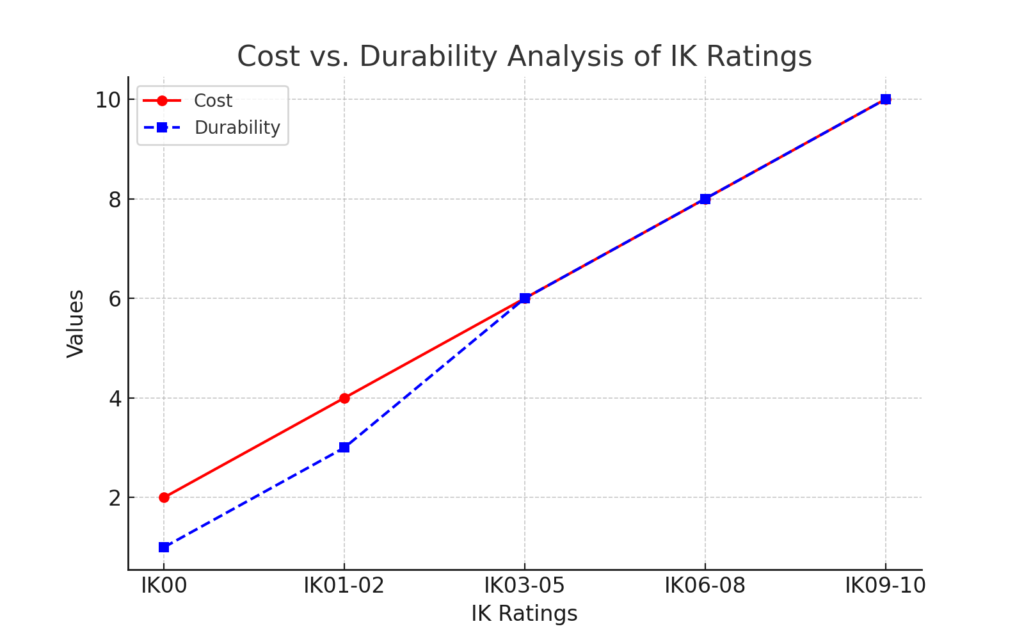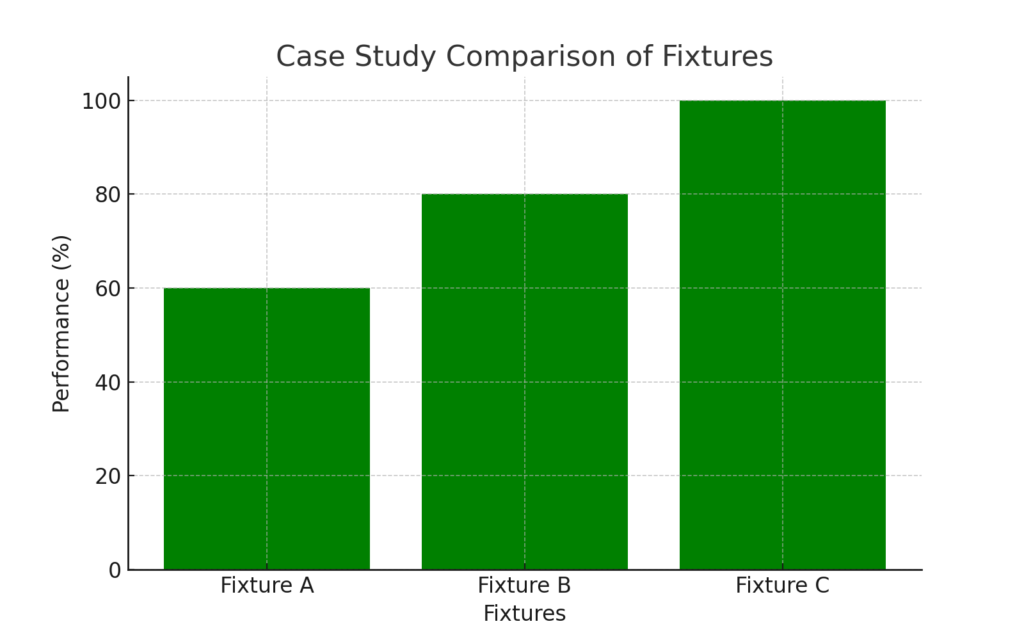Introduction
Selecting the right street lighting involves understanding a variety of technical specifications, one of the most crucial being the IK rating. The IK rating measures the impact resistance of a light fixture’s housing and is vital for ensuring the longevity and safety of street lights, particularly in outdoor or high-traffic environments. This guide explains the importance of IK ratings, helping you choose the ideal fixture for your specific needs.
Understanding IK Ratings
The IK rating system is an internationally recognized classification that indicates the impact resistance of electrical enclosures. It is represented by a two-digit number, where the first digit represents the level of protection against solid objects, and the second digit indicates the protection level against mechanical impact.
- IK00 to IK02: No protection or minimal impact resistance.
- IK03 to IK05: Low protection against impacts.
- IK06 to IK08: Medium protection, suitable for most public areas.
- IK09 to IK10: High protection, ideal for high-risk areas.
The higher the IK rating, the more resistant the fixture is to impact, which is essential for areas prone to vandalism or extreme weather conditions.

Recommended IK Ratings for Different Environments
1. Low-Risk Areas
- Suggested IK Ratings: IK02 to IK05
- Typical Applications: Residential areas, parks, and pedestrian walkways.
For environments where the risk of impact is minimal, such as quiet residential neighborhoods, a low IK rating (IK02 to IK05) is sufficient. These areas experience less foot traffic and are less prone to vandalism.
2.Medium-Risk Areas
- Suggested IK Ratings: IK06 to IK08
- Typical Applications: Commercial spaces, schools, public parks.
Commercial areas and locations like schools or parks that experience higher foot traffic and occasional accidental damage would benefit from medium-range IK ratings. These ratings offer enhanced protection against common impacts without the need for the highest level of protection.
3. High-Risk Areas
- Suggested IK Ratings: IK09 and above
- Typical Applications: Industrial zones, transport hubs, high-security facilities.
For areas exposed to significant physical risks, such as industrial zones or public transport stations, it is essential to opt for high IK-rated street lights (IK09 or IK10). These fixtures can withstand heavy impacts from objects, vandalism, or accidental collisions.

Factors Influencing the Choice of IK Rating
1. Environmental Conditions
Environmental conditions are a key factor in selecting the right IK rating. Areas that face extreme weather, such as heavy winds, storms, or freezing temperatures, require street lights with high-impact resistance to withstand these conditions. Locations subject to vandalism or accidental damage, such as near sports fields or bus stops, also demand a higher IK rating for durability.

2. Material Durability
The housing material of street light fixtures plays a significant role in their impact resistance. Materials such as aluminum or high-density plastic often provide better protection against impact than standard steel, making them ideal for higher IK ratings. The choice of material also affects the weight and ease of installation.

3. Maintenance Considerations
A higher IK rating often means a more robust construction, but it can also lead to increased maintenance costs. Choosing an excessively high rating for a low-risk area can result in unnecessary upfront costs. Balancing the need for protection with the cost of the fixture and maintenance is essential for optimizing the investment in street lighting.
Case Studies and Examples
1. Comparison of Street Light Fixtures with Varying IK Ratings
- Fixture A (IK05): Installed in a suburban residential area, this fixture has shown satisfactory performance over the years, with minimal impact damage reported.
- Fixture B (IK08): In a school zone, this fixture has successfully resisted occasional vandalism without requiring significant repairs.
- Fixture C (IK10): Installed in an industrial zone, it has endured significant impacts from trucks and machinery without failure, proving its suitability for high-risk environments.
These real-world examples demonstrate how the right IK rating helps ensure durability and cost-effectiveness, reducing long-term maintenance expenses.

Conclusion
Selecting the right IK rating is essential for ensuring that street lights perform well under varying environmental conditions and impact risks. By understanding the differences between low, medium, and high-risk areas, and considering environmental factors, material durability, and maintenance costs, you can make an informed decision. Investing in the appropriate IK-rated street light not only enhances safety and longevity but also ensures you’re getting the best value for your investment.
For urban planners and procurement officers, it’s crucial to match the IK rating with the intended environment to avoid unnecessary costs while ensuring optimal performance and protection.

